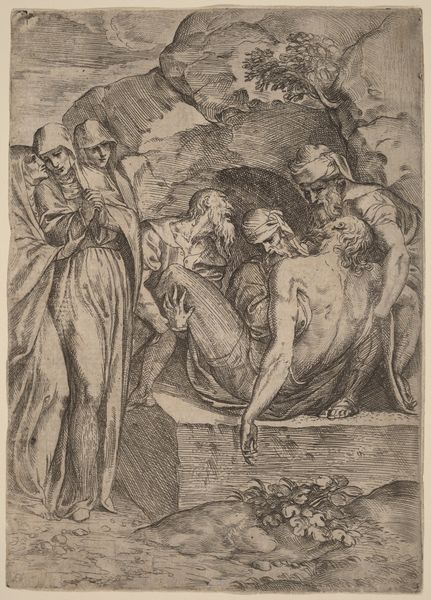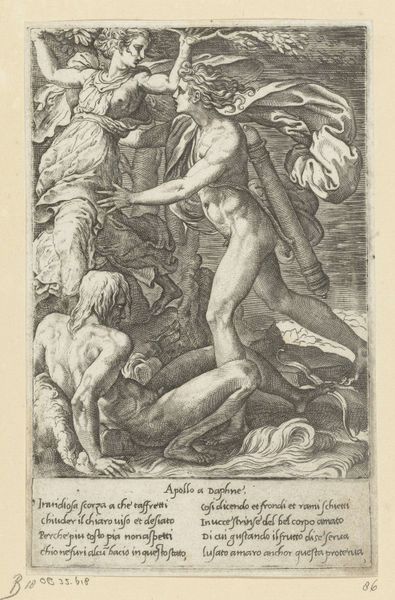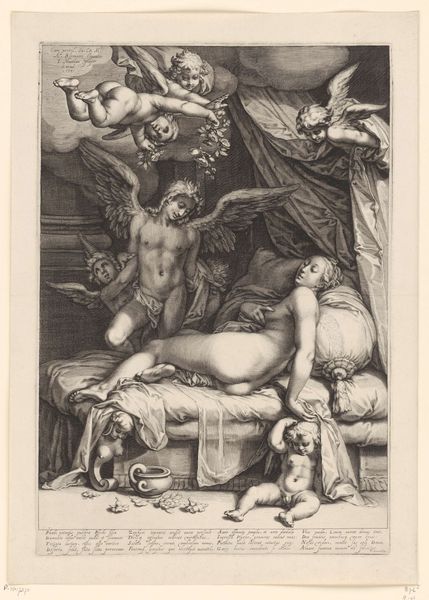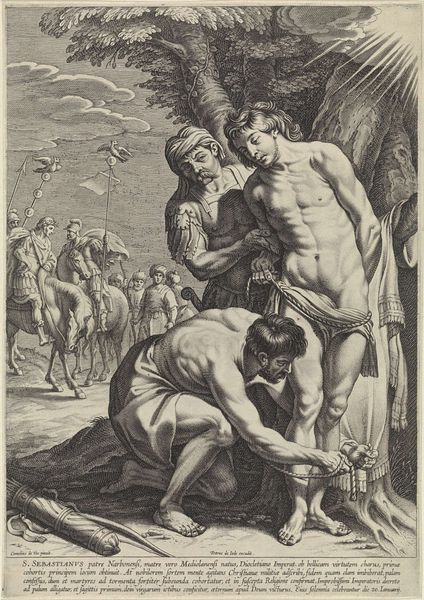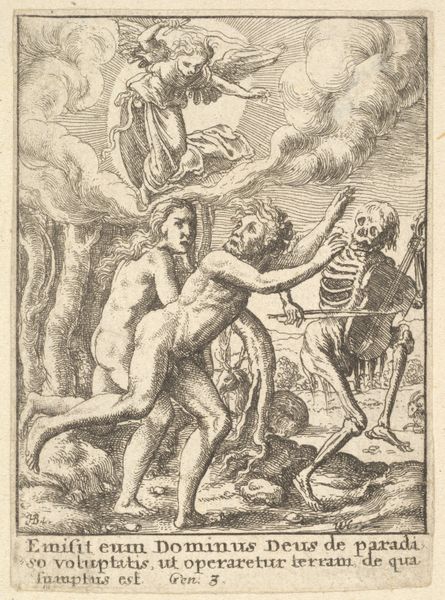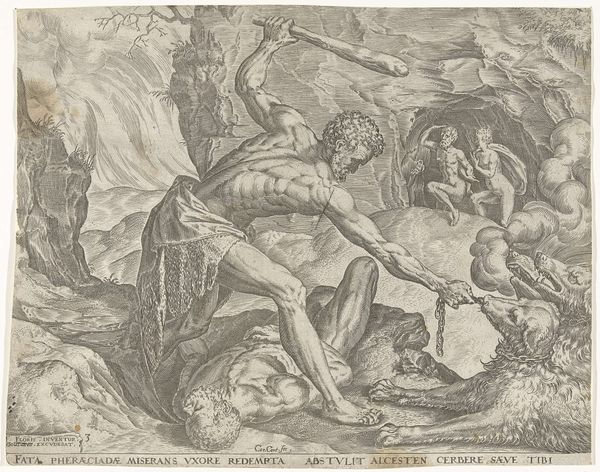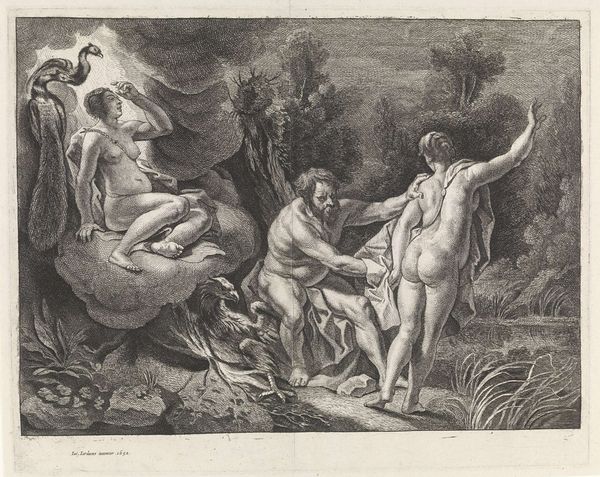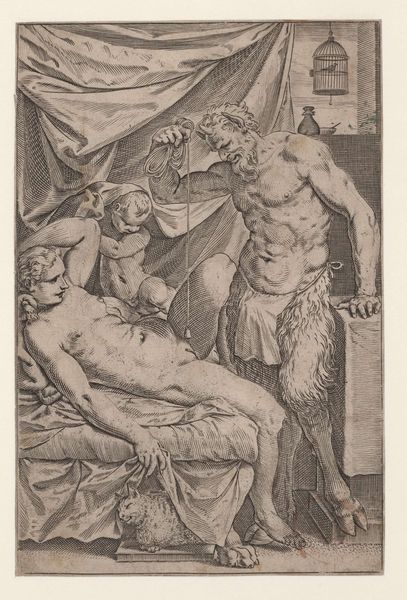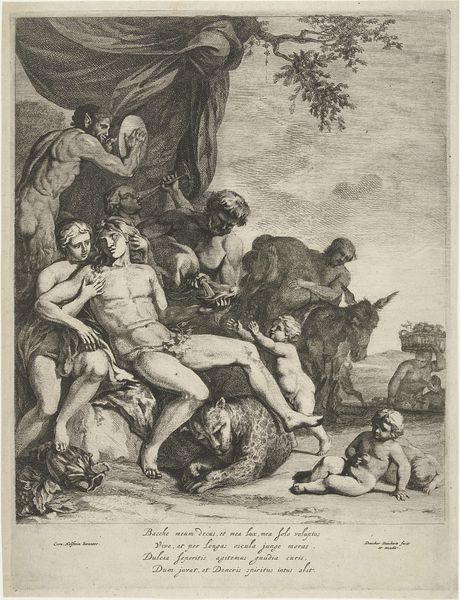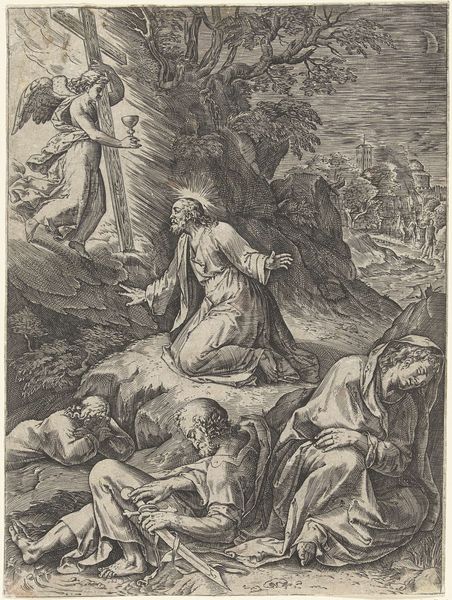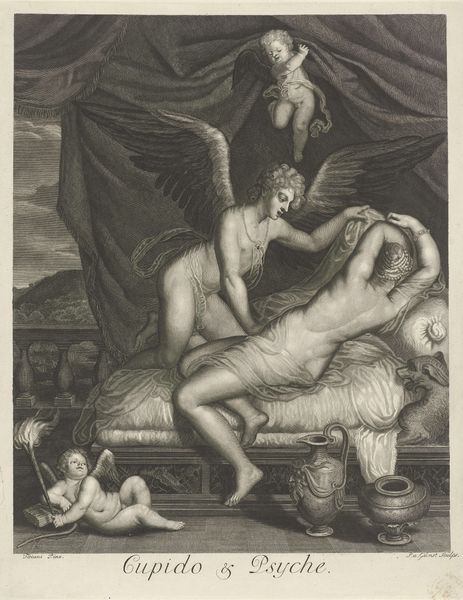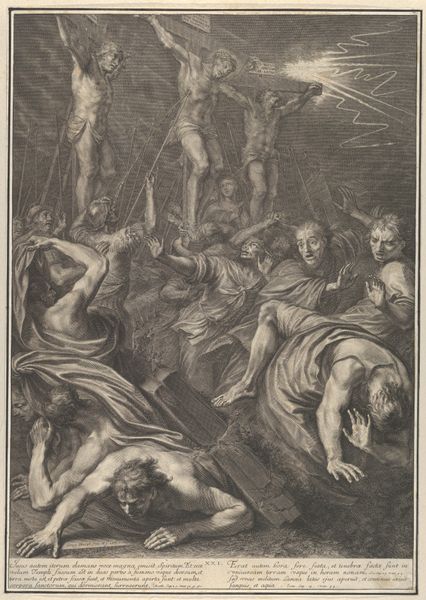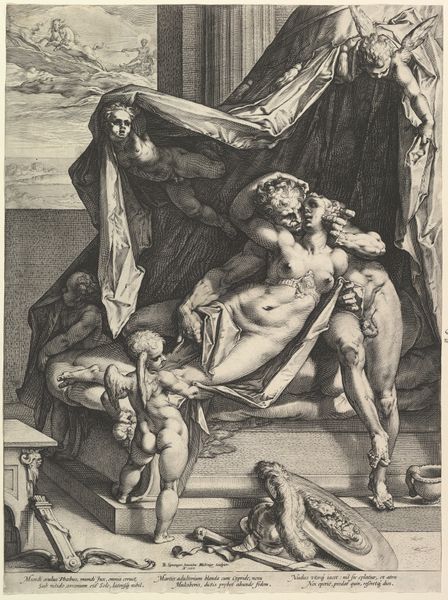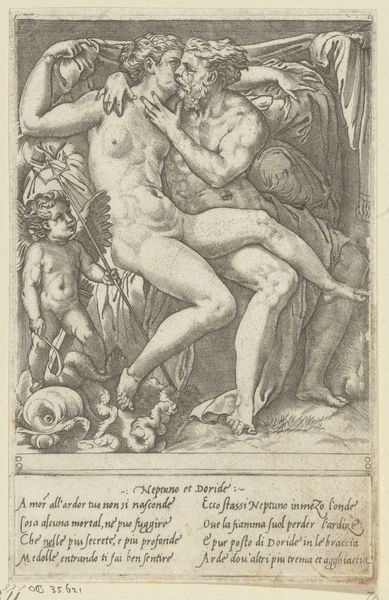
engraving
#
narrative-art
#
baroque
#
figuration
#
history-painting
#
nude
#
engraving
Dimensions: height 167 mm, width 132 mm
Copyright: Rijks Museum: Open Domain
Curator: The sheer weight of grief emanates from this scene. The stark black and white amplifies the emotional rawness. What do you see here? Editor: We’re looking at an engraving created around 1700 by J. Alexander Janssens. It's titled "Achilles treurt om de dood van Patroclus," or "Achilles Mourns the Death of Patroclus." What interests me here is how a universal, masculine, narrative of sorrow and grief can open paths towards vulnerability and openness if interpreted through contemporary feminist theories. Curator: Precisely. Janssens depicts a pivotal moment from Homer's *Iliad*. Achilles is consumed by grief over the loss of Patroclus, his closest companion. What I find striking is the backdrop against this private display of lament. Notice the ships on the horizon – a looming reminder of the Trojan War’s backdrop against domestic, bodily experience? Editor: Indeed. The inclusion of that war setting is powerful, contrasting private anguish with grand narratives of heroism. But it makes me think further about what constitutes heroism and in particular if there could be queer erotic reading, given the intimacy between these men and the traditional portrayal of masculinity that doesn’t normally involve open lament. In Janssens depiction, are there ways to consider alternative power structures that emerge in the relationship of Achilles and Patroclus? Curator: It's worth noting how history and prevailing societal structures shape such narratives. These engravings, mass-produced and distributed, also participated in the circulation of knowledge about classic heroes, and, specifically, what behaviors are associated with class and privilege. They are never divorced from the material culture in which they participate. The lines, quite literally, tell a story about acceptable forms of masculine emotions but within set parameters. The question of subversion can then be pushed. Editor: Well, Janssens’ baroque treatment almost elevates personal loss into a spectacle, no? From an activist perspective, that makes me cautious as these types of engravings almost function as examples that simultaneously showcase grief and perpetuate power dynamics of race, class, and access. The ability to showcase one’s grief has everything to do with performativity. Curator: Yes. And so we can appreciate the skill of the engraver in creating a powerful tableau that encapsulates a turning point, even while unpacking its contextual implications today. Editor: It makes for powerful introspection. A potent reminder that images, however historical, never exist outside contemporary critical and lived perspectives.
Comments
No comments
Be the first to comment and join the conversation on the ultimate creative platform.
